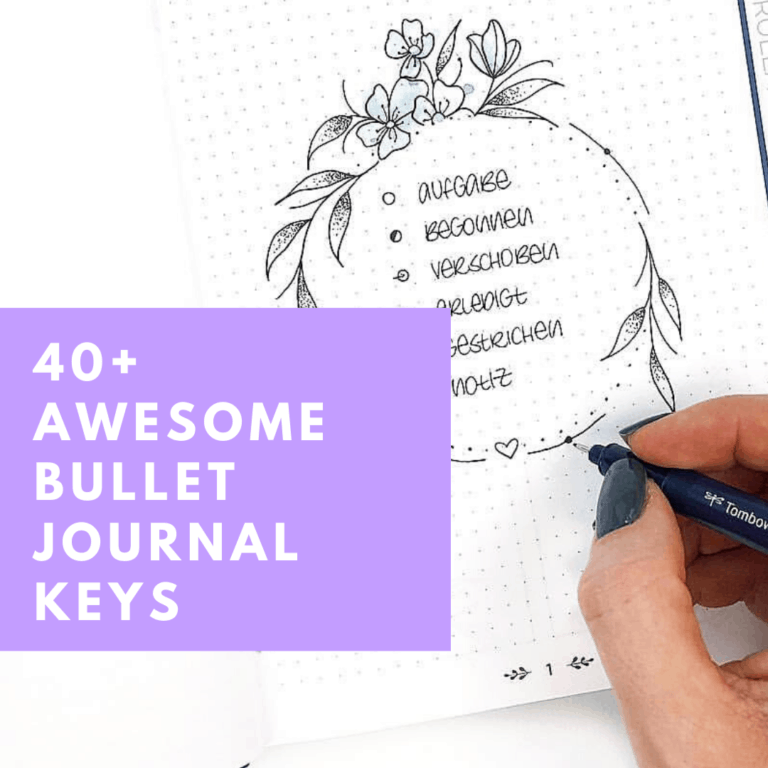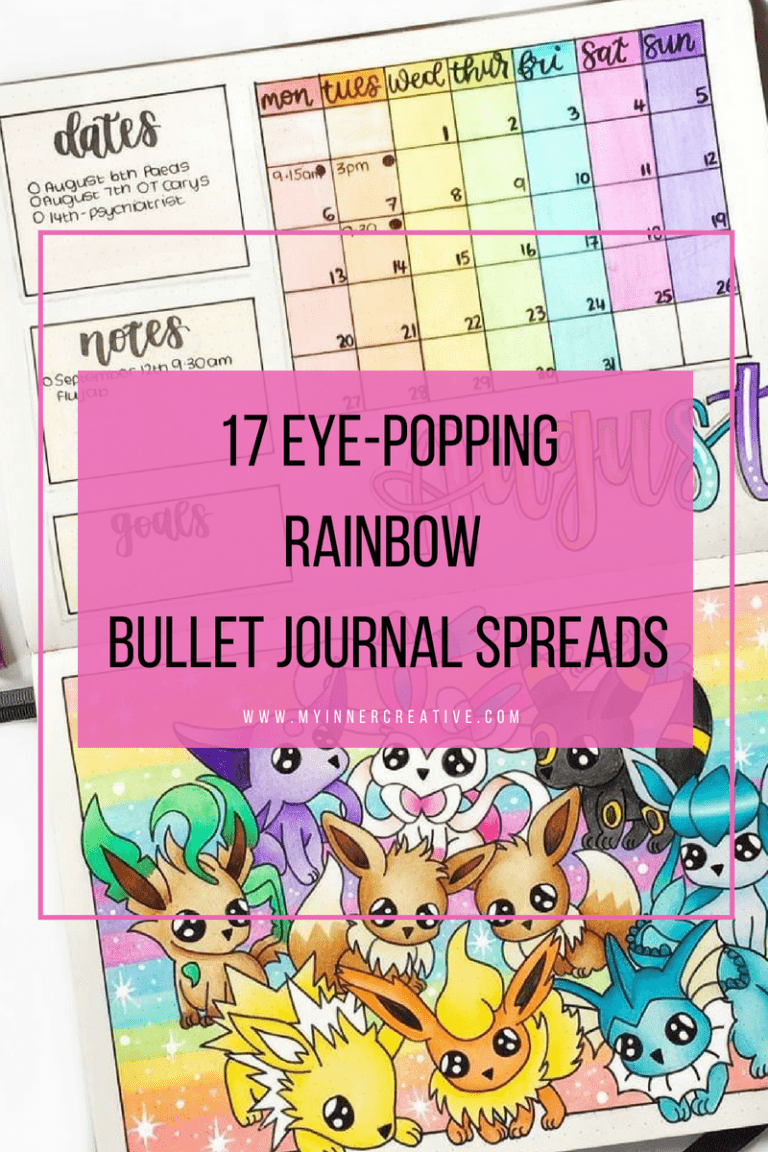Crafting Your 2023 Goals: A Comprehensive Guide to Bullet Journaling for success
Welcome to our blog post on setting your 2023 goals using the power of bullet journaling. Whether you’re new to journaling or a seasoned pro, this step-by-step guide will help you seamlessly incorporate your aspirations into a beautifully organized dot journal. Get ready to dive into the world of bullet journaling as we explore journaling prompts, monthly spreads, weekly spreads, and effective goal-setting techniques.
Laying the Foundation: Setting Up Your Dot Journal for 2023 goals
Imagine your dot journal or bullet journal as a blank canvas waiting to be filled with your dreams, plans, and aspirations. As you embark on your 2023 goal-setting journey, laying a strong foundation is key to keeping your journal organized and purposeful. Let’s delve into the essential steps of selecting the perfect notebook and setting up key pages to create a well-structured dot journal that supports your goals.
Selecting the Perfect Notebook: Choosing the right dot grid notebook is like finding a trusted companion for your goal-setting adventure. Here’s why this decision is so important:
- Paper Quality: The paper quality of your notebook affects how smoothly your pens glide and whether there’s any ghosting or bleeding. Opt for a notebook with thick, high-quality paper to ensure your pages remain clean and pleasant to write on.
- Dot Grid Format: The dot grid pattern strikes a perfect balance between the structure of lines and the freedom of blank pages. Dots serve as unobtrusive guides for creating organized layouts without overwhelming the page.
- Binding and Size: Consider whether you prefer a spiral-bound, hardcover, or softcover notebook. The size of the notebook should be portable enough to carry with you yet spacious enough to accommodate your layouts comfortably.
- Durability: Your dot journal will likely accompany you through the entire year, so choose a notebook that’s durable and built to withstand wear and tear.
- Personal Aesthetics: Aesthetics matter – you’ll be spending a lot of time with your notebook, so opt for a design that resonates with your style and personality.
- Eco-Friendly Options: If sustainability is important to you, look for notebooks made from recycled materials or from brands committed to environmental responsibility.
Setting Up Key Pages:
Once you’ve selected the perfect notebook, it’s time to create essential pages that form the backbone of your dot journal:
- Index: The index is like a table of contents for your journal. As you add new pages, note them down in the index along with their corresponding page numbers. This makes it easy to find specific entries later.
- Future Log: The future log is a space where you can jot down upcoming events, appointments, and milestones for the entire year. Divide this page into sections for each month to provide a bird’s-eye view of your year.
- Yearly Overview: This page provides a space to outline your overarching goals and aspirations for the year. It’s a visual reminder of what you’re working towards and sets the tone for your monthly and weekly spreads.
By selecting a dot grid notebook that resonates with you and creating these foundational pages, you’re setting the stage for a journaling journey that’s both organized and inspiring. These pages serve as the roadmap that will guide you through the year, ensuring that your goals remain front and center as you progress towards achieving them. So, gather your chosen notebook and let’s move forward, creating a dot journal that becomes a cherished tool for your 2023
Goal-Setting Techniques in your bullet journal:
Setting goals is the compass that guides us towards our desired destinations. To ensure your 2023 goals are not just dreams but achievable realities, let’s explore two powerful goal-setting techniques: the SMART framework and mind mapping.
SMART Goals:
The SMART framework is a systematic approach to goal setting that increases the likelihood of success by ensuring your goals are clear, actionable, and well-defined. Each letter in the SMART acronym represents a critical aspect of effective goal formulation:
- Specific: Start by making your goal as specific as possible. Avoid vague statements and focus on what exactly you want to achieve. The more precise your goal, the clearer your path forward.
- Measurable: Goals should be measurable so that you can track your progress and determine when you’ve achieved them. Quantify your goals with numbers, percentages, or other measurable indicators.
- Achievable: Ensure your goals are realistic and attainable given your current resources, time, and constraints. While it’s great to aim high, setting goals that are too far-fetched can lead to frustration.
- Relevant: Your goals should be aligned with your larger aspirations and values. Consider how each goal contributes to your overall vision and whether it’s truly meaningful to you.
- Time-bound: Assign a clear timeline to your goals. Set deadlines for when you intend to achieve each milestone. This sense of urgency helps you stay focused and motivated.
Using the SMART framework, you’ll transform vague desires into well-defined objectives. For instance, instead of “Exercise more,” a SMART goal would be “Complete a 5K run in under 30 minutes by October 2023.” This clarity enables you to plan actionable steps and monitor your progress effectively.

Mind Mapping:
Mind mapping is a creative and visual technique that helps you explore your goals from various angles, brainstorm ideas, and organize your thoughts. Here’s how to use mind mapping for effective goal setting:
- Start with a Central Idea: Write your main goal or aspiration at the center of a page. This serves as the focal point of your mind map.
- Branch Out with Sub-Goals: Create branches radiating from the center, each representing a sub-goal related to your main objective. These sub-goals should contribute to the overall accomplishment.
- Add Details and Actions: From each sub-goal, extend further branches with specific actions, tasks, or steps needed to achieve that sub-goal. These actions become the building blocks of your plan.
- Connect and Visualize: Use lines, colors, and shapes to connect related ideas. This visual representation makes it easy to see how different elements are interconnected.
- Reflect and Revise: As you create your mind map, take a step back to evaluate the coherence and feasibility of your plan. Adjust and refine as needed.
Mind mapping allows you to see the big picture while breaking down your goals into manageable parts. It encourages creative thinking and reveals potential strategies you might not have considered otherwise. Plus, the visual nature of mind maps makes them engaging and easy to reference.
By combining the SMART framework with mind mapping, you’ll create a robust goal-setting approach that’s both structured and imaginative. This fusion of practicality and creativity ensures that your 2023 goals are not only well-defined but also thoroughly explored and strategically planned. Let’s move forward with these techniques, transforming your aspirations into actionable steps towards success.
Monthly Spreads for Goal Tracking in your bullet journal:
Monthly spreads in your dot journal are like checkpoints on your journey towards achieving your 2023 goals. They provide you with a focused and organized view of each month, helping you stay on track and monitor your progress. Let’s delve into two crucial aspects of monthly spreads: creating a monthly overview and incorporating tracking elements to effectively monitor your goal achievements.
Creating a Monthly Overview:
A well-structured monthly overview sets the stage for successful goal pursuit. Here’s how to guide readers through creating a visual and actionable monthly spread:
- Monthly Title and Theme: Begin by labeling the top of the page with the month’s name. Consider adding a decorative element or theme that resonates with the season or your personal preferences.
- Calendar Layout: Dedicate a section of your spread to a traditional calendar grid for the month. Highlight key dates, appointments, and events that are relevant to your goals.
- Goal Visualization: Reserve a prominent space for your overarching goals for the month. Whether it’s completing a project, starting a healthy habit, or achieving a fitness milestone, make sure these goals are front and center.
- Key Dates: Include a section for important dates that relate to your goals. These could be deadlines, milestones, or even personal celebrations that motivate you.
- Tasks and To-Do Lists: Allocate space for listing the specific tasks and actions needed to work towards your goals. Break down larger goals into actionable steps for better clarity.
- Notes and Reflections: Leave room for notes and reflections where you can jot down thoughts, insights, and observations throughout the month.
Remember, your monthly overview serves as a roadmap for the coming weeks. It’s a visual representation of your intentions and aspirations, helping you stay aligned with your goals.
Tracking Progress:
Monitoring your progress is a vital aspect of achieving your goals. Incorporating tracking elements adds a layer of accountability and motivation to your monthly spreads:
- Habit Trackers: Devote a section of your monthly spread to habit trackers. These are grids where you can mark off each day you successfully complete a specific habit or task related to your goals. For instance, if your goal is to read more, track the number of pages read each day.
- Progress Bars: Progress bars are a visual representation of how far you’ve come towards a specific goal. Create a bar that you can fill in or color each day, week, or month as you make progress. Watching the bar fill up can be incredibly rewarding and motivating.
- Achievement Notes: Include a space to record your achievements for the month. This can range from completing tasks to overcoming challenges. Celebrate even the smallest victories.
- Reflection Section: Dedicate a portion of your monthly spread for reflection. Ask questions like, “What went well this month?” and “What could I improve?” Reflecting on your progress can provide valuable insights for the future.
By integrating tracking elements into your monthly spreads, you’re making your goals tangible and measurable. You’re creating a visual record of your journey, which not only helps you see how far you’ve come but also encourages you to keep pushing forward.
With monthly spreads that encompass both goal visualization and progress tracking, you’re setting yourself up for a focused and purposeful journey towards your 2023 aspirations. Each month becomes a chapter of your success story, and your dot journal becomes a supportive companion on this transformative adventure.
Bullet Journal Weekly Spread:
The weekly spread is your compass for navigating the week ahead. It’s where your aspirations meet practical planning, creating a space where you can organize tasks, events, and commitments in a way that aligns with your 2023 goals. Let’s dive into the art of designing a weekly spread and explore the effective technique of time blocking for optimal goal achievement.
Designing a Weekly Spread:
Designing a weekly spread in your bullet journal is a chance to blend functionality with creativity. Here’s a step-by-step guide to help you craft a weekly spread that caters to your needs:
- Choose Layout: Select a layout that suits your preferences. Common options include a two-page spread or a vertical layout with days listed one below the other.
- Dates and Days: Start by writing the dates of the week and the corresponding days. Use a prominent font or style to make these stand out.
- Events and Appointments: Allocate space for events, appointments, and commitments. Use time indicators (e.g., 9:00 AM – Meeting) to clearly mark when you need to be somewhere or complete a task.
- Task List: Create a section for your task list. Write down the tasks you want to accomplish during the week, making sure they align with your monthly goals.
- Daily Breakdown: If you have specific tasks or events for each day, break down your task list by day. This makes it easier to allocate time and prioritize tasks.
- Notes and Reflections: Include a space for notes, reflections, or insights that arise during the week. This is where you can capture thoughts that don’t fit neatly into tasks or events.
Time Blocking:
Time blocking is a powerful technique that helps you allocate dedicated time slots for different tasks and activities. It’s an excellent way to ensure you’re making progress on your goals while managing your schedule efficiently:
- Identify Priorities: Review your goals for the week and determine the most important tasks. These are your priorities, and they should receive dedicated time blocks.
- Allocate Time: Assign specific time slots for each task. Be realistic and consider how much time each task requires. Leave buffer time between tasks to avoid overloading your schedule.
- Stick to the Plan: When the time comes for a time-blocked task, commit to it fully. Avoid distractions and stay focused on the task at hand.
- Include Breaks: Don’t forget to allocate short breaks to recharge. These moments of rest contribute to your overall productivity and well-being.
- Adjust as Needed: Life is unpredictable, and plans may need adjustments. Be flexible and willing to adapt your time blocks if unexpected events arise.
- Reflect and Evaluate: At the end of the week, reflect on how well your time blocking worked. Were you able to accomplish your goals? Were there any challenges you faced?
By incorporating time blocking into your weekly spread, you’re not just creating a to-do list; you’re creating a structured plan that ensures your goals are prioritized and accomplished. This technique empowers you to manage your time effectively and make meaningful progress towards your aspirations.
Through well-designed weekly spreads and the strategic use of time blocking, you’re weaving intention into your daily routine. Your bullet journal becomes a hub of productivity, guiding you towards achieving your 2023 goals with purpose and efficiency.
Incorporating Creativity: Adding Artistic Flair to Your Bullet Journal:
Your bullet journal isn’t just a tool for organization; it’s also a canvas for self-expression and creativity. Adding artistic elements to your journal not only enhances its visual appeal but also makes the process of goal setting and tracking more enjoyable. Let’s explore how you can infuse your dot journal with artistic flair through doodles, decorations, and inspirational quotes.
Doodles and Decorations:
Doodles and decorations bring your bullet journal to life, making it uniquely yours. Here are some creative ideas to inspire your artistic journey:
- Margin Doodles: Frame your pages with simple doodles along the edges. These could be floral motifs, geometric shapes, or even tiny characters that reflect your mood or theme for the week.
- Iconography: Design icons or symbols that represent different types of tasks or goals. For example, draw a small dumbbell for workouts, a book for reading goals, or a paintbrush for creative projects.
- Banner Headers: Use banners at the top of your pages to label the days of the week or highlight special events. Embellish these banners with patterns, swirls, or gradients.
- Creative Lettering: Experiment with different lettering styles to write headers, titles, and quotes. Combine block letters with cursive writing or add decorative elements to your text.
- Washi Tape and Stickers: Incorporate washi tape and stickers to add color and texture. You can use them to frame sections, create tabs, or emphasize important details.
- Thematic Spreads: Consider creating spreads with a specific theme, such as a nature-inspired spread or a travel-themed layout. Incorporate related doodles and decorations to enhance the thematic experience.
Remember, there’s no right or wrong way to doodle and decorate your journal. Let your creativity flow, and don’t be afraid to experiment with different styles and techniques.
Inspirational Quotes:
Motivational quotes have the power to uplift your spirits and keep you focused on your goals. Here’s how to infuse your journal with the wisdom of inspirational quotes:
- Goal-Centric Quotes: Search for quotes that resonate with your 2023 goals. These can be about determination, perseverance, growth, or any other aspect of goal setting.
- Visual Quotes: Turn quotes into visual elements by incorporating them into your layouts. Write them in beautiful calligraphy or create word art that complements the theme of your spread.
- Quote Collection: Dedicate a section of your journal to a collection of inspirational quotes. Whenever you come across a quote that resonates, add it to this section for instant motivation.
- Rotation: Change your quote each week or month to keep your journal fresh and your inspiration renewed.
- Interactive Quotes: Use your journal to engage with quotes by jotting down thoughts on how they relate to your goals or actions you’re taking to embody their message.
By infusing your journal with doodles, decorations, and inspirational quotes, you’re turning your journal into a personal sanctuary of creativity and motivation. It becomes a space that not only keeps you organized but also fuels your passion and enthusiasm for pursuing your 2023 goals.
Create a vision board for your 2023 goals in your bullet journal
Creating a vision board within your bullet journal is a fantastic way to visually manifest your goals, dreams, and aspirations for the year ahead. A vision board serves as a daily reminder of what you’re working towards and can help keep you motivated and focused on your desired outcomes. Here’s a step-by-step guide to creating a vision board in your bullet journal:
Step 1: Gather Your Supplies: Collect the supplies you’ll need, including magazines, newspapers, printed images, washi tape, markers, colored pencils, scissors, and glue.
Step 2: Set an Intention: Before you begin, take a moment to reflect on your goals and intentions for the year. What themes or aspirations do you want to bring to life on your vision board?
Step 3: Choose Images and Words: Flip through magazines, newspapers, or printouts to find images, quotes, and words that resonate with your goals. Look for visuals that evoke the emotions and achievements you want to experience.
Step 4: Arrange and Glue: Start arranging your chosen images and words on a page in your bullet journal. Play around with different layouts until you find a composition that feels right. Once you’re satisfied, glue the pieces in place.
Step 5: Add Personal Touches: Enhance your vision board with personal touches. You can add doodles, drawings, or handwritten affirmations that amplify the meaning of each visual element.
Step 6: Incorporate Color and Texture: Use markers, colored pencils, and washi tape to add color and texture to your vision board. These elements can make your board more visually appealing and engaging.
Step 7: Reflect on the Meanings: As you create your vision board, reflect on the meaning behind each image and word you’ve chosen. How does each element connect to your goals and aspirations?
Step 8: Display and Interact: Place your completed vision board in a prominent spot where you’ll see it daily. You can also create a specific section in your bullet journal where you’ll regularly interact with your vision board.
Step 9: Regular Engagement: Set aside time each week or month to engage with your vision board. Reflect on your progress, visualize your goals, and reaffirm your intentions.
Step 10: Update and Evolve: Throughout the year, your goals and aspirations may evolve. Feel free to update your vision board as your vision becomes clearer or as new goals emerge.
Creating a vision board in your bullet journal adds a creative and inspirational dimension to your goal-setting process. It’s a visual representation of your dreams that can spark motivation and keep you focused on your journey of growth and accomplishment.
Reviewing and Adapting Goals:
As you navigate your journey towards your 2023 goals, regular review and adaptation are crucial for staying on track and making meaningful progress. Let’s explore two important practices: quarterly check-ins and celebrating achievements, which ensure your goals remain relevant, achievable, and motivating.
Quarterly Check-Ins:
Quarterly check-ins provide you with the opportunity to pause, reflect, and recalibrate your goals. Here’s why scheduling regular evaluations is essential:
- Assess Progress: Review your accomplishments, setbacks, and the overall progress you’ve made towards your goals over the past quarter.
- Identify Challenges: Identify any obstacles or challenges that have emerged. This helps you make strategic adjustments to your approach and anticipate potential roadblocks.
- Reflect on Goals: Consider whether your goals still align with your aspirations and values. Are they still relevant and motivating, or do they need modification?
- Adjust Strategies: If you notice certain strategies aren’t yielding the desired results, the quarterly check-in is the perfect time to tweak your action plans.
- Celebrate Wins: Acknowledge and celebrate the achievements you’ve made, no matter how small. This boosts your morale and keeps you motivated.
- Set New Milestones: Set new milestones and objectives for the next quarter based on your observations and reflections. This ensures a continuous path of growth.
Celebrating Achievements:
Celebrating achievements, whether big or small, is a vital part of the goal-setting process. Here’s why it matters:
- Boost Motivation: Celebrations serve as rewards for your hard work and dedication. They energize you to keep pursuing your goals with enthusiasm.
- Positive Reinforcement: Celebrating achievements reinforces positive behaviors and habits that contribute to your success.
- Acknowledge Progress: Every step you take towards your goals is progress. Celebrating these steps nurtures a sense of accomplishment and fulfillment.
- Build Confidence: Recognizing your achievements builds self-confidence and belief in your ability to overcome challenges.
- Maintain Perspective: Celebrations remind you that your efforts are worth it and that you’re moving in the right direction, even if you encounter setbacks.
Encourage readers to mark milestones – whether it’s completing a project, reaching a milestone, or consistently practicing a new habit – with a reward or a special treat. The act of celebrating fosters a positive and empowering mindset that keeps them motivated and engaged in their journey.
By incorporating quarterly check-ins and celebrating achievements, you’re weaving a dynamic feedback loop into your goal-setting process. This loop ensures that your goals remain relevant, adaptable, and inspiring, guiding you towards a year filled with growth and accomplishment.
What supplies do you need to get started with 2023 Planning?
To embark on your exciting journey of goal setting and creativity using a bullet journal, you’ll need a few essential supplies to get started. Here’s a list of supplies that will help you create a beautifully organized dot journal for your 2023 goals:
- Dot Grid Notebook: The foundation of your bullet journal. Look for a notebook with good paper quality, a dot grid pattern, and a size that suits your preferences.
- Pens: A set of fine-tip pens in various colors for writing, doodling, and creating headers. Gel pens, fineliners, or markers work well.
- Ruler: A clear and precise ruler is essential for creating clean lines and grids on your pages.
- Pencil: A pencil is handy for sketching out layouts and designs before committing to ink.
- Eraser: An eraser helps you correct mistakes and adjust pencil marks without damaging the paper.
- Decorative Elements: Colored pencils, markers, or brush pens can be used for adding colorful accents and decorations to your pages.
- Washi Tape: Decorative tape that adds patterns and texture to your pages.
- Stickers: Stickers can be used for embellishments, icons, and labels.
- Stencils: Stencils can help you create consistent shapes and designs without freehand drawing.
- Highlighters: Use highlighters to emphasize important tasks, events, and information.
- Stamps and Ink Pads: These can add decorative elements or icons to your pages.
- Post-it Notes: Post-it notes are great for temporary reminders or for adding information that might change.
- Scissors: Useful for cutting out stickers, washi tape, and other decorative elements.
- Glue or Adhesive: If you plan to add clippings or cutouts to your journal, you’ll need adhesive.
- Steady Surface: Having a firm surface to work on, like a desk or table, ensures your journaling experience is comfortable.
Remember, while these supplies can enhance your bullet journaling experience, the most important element is your creativity and commitment. Your bullet journal is a reflection of your goals, aspirations, and personal style, so feel free to personalize it in a way that resonates with you. As you progress in your journaling journey, you might discover additional supplies that suit your needs and preferences. Happy journaling!
Journaling prompts for goal setting in 2023
Here’s a list of journal prompts to help you plan an amazing 2023 and set meaningful goals in your bullet journal:
- Reflecting on the Past Year:
- What were your biggest achievements in the past year?
- What challenges did you overcome, and what did you learn from them?
- What moments brought you the most joy and satisfaction?
- Gratitude and Appreciation:
- List five things you’re grateful for from the past year.
- Reflect on the people, experiences, and opportunities you’re thankful for.
- How can you carry this sense of gratitude into the new year?
- Setting Intentions for the Year:
- What word or phrase would you like to define your 2023? Why?
- What areas of your life do you want to focus on improving this year?
- Visualizing Your Ideal Year:
- Imagine it’s December 2023. Describe how you want to feel and what you want to have achieved by then.
- What does a typical day in your ideal year look like? Walk through your daily routine.
- Setting SMART Goals:
- Choose one major goal for each area of your life (e.g., career, health, relationships). Make sure each goal follows the SMART criteria.
- Breaking Down Goals:
- Break down your major goals into smaller, actionable steps.
- How will you track your progress towards these steps?
- Overcoming Challenges:
- What potential obstacles might you encounter while pursuing your goals?
- How can you overcome or mitigate these challenges?
- Time Management and Prioritization:
- How will you allocate time to work on your goals each week?
- What activities can you eliminate or reduce to make time for your goals?
- Self-Care and Well-Being:
- What self-care practices will you prioritize to maintain your physical and mental well-being?
- How will self-care support your goal achievement?
- Personal Growth:
- What skills or knowledge do you want to acquire or develop this year?
- How will these new skills contribute to your overall growth?
- Celebrating Milestones:
- List milestones you aim to achieve in each quarter of the year.
- How will you celebrate these milestones when you reach them?
- Embracing Flexibility:
- How will you adjust your goals if unexpected opportunities or challenges arise?
- How can you remain adaptable while staying focused on your priorities?
- Tracking Progress and Reflecting:
- Choose a monthly reflection prompt to answer at the end of each month.
- How will regular reflections contribute to your growth and goal achievement?
- Personal Affirmations:
- Write down positive affirmations that align with your goals and aspirations.
- How can you incorporate these affirmations into your daily routine?
- Visualizing Success:
- Imagine yourself achieving your major goals. How does it feel?
- Create a vision board or collage that represents your aspirations.
Remember, your journal prompts are a tool for self-discovery and planning. Take your time to explore each prompt and allow your thoughts to flow naturally. Use these prompts as a springboard to set meaningful intentions and create a roadmap for a successful and fulfilling 2023.






